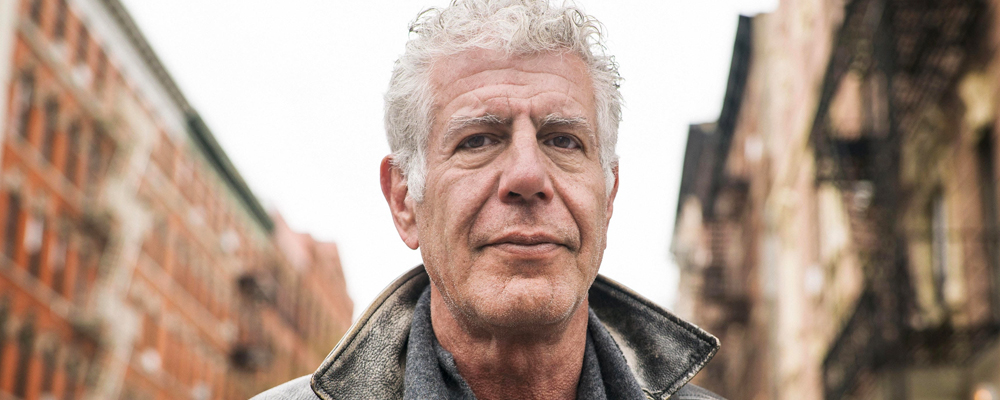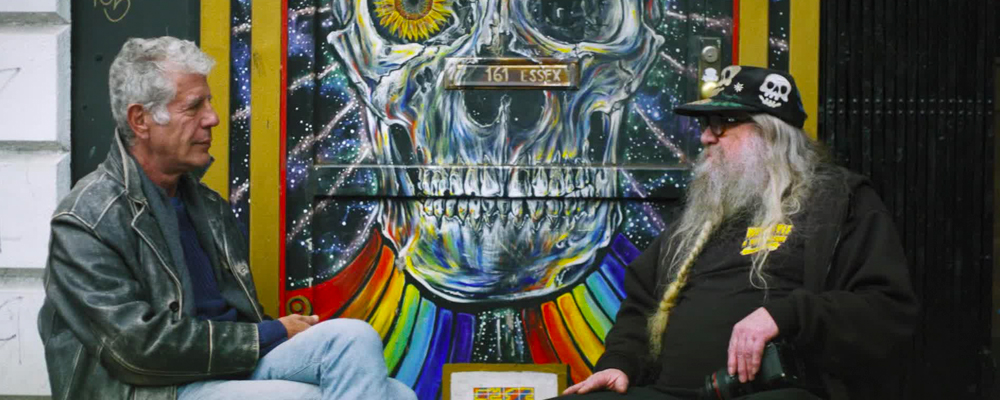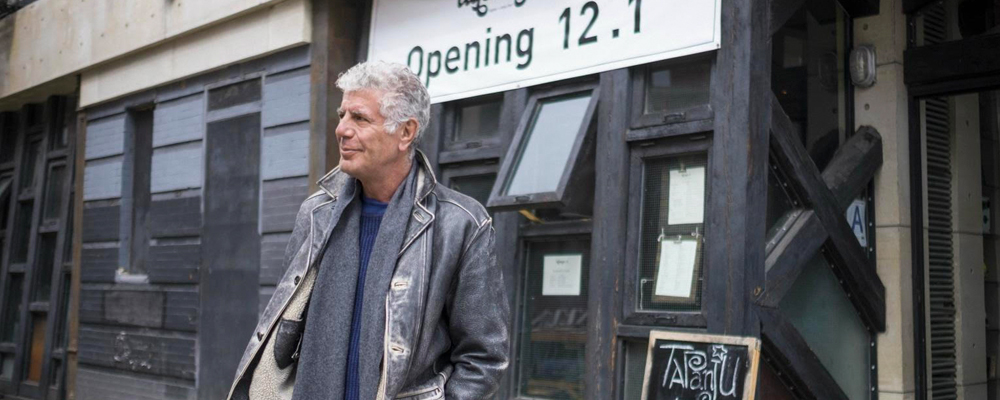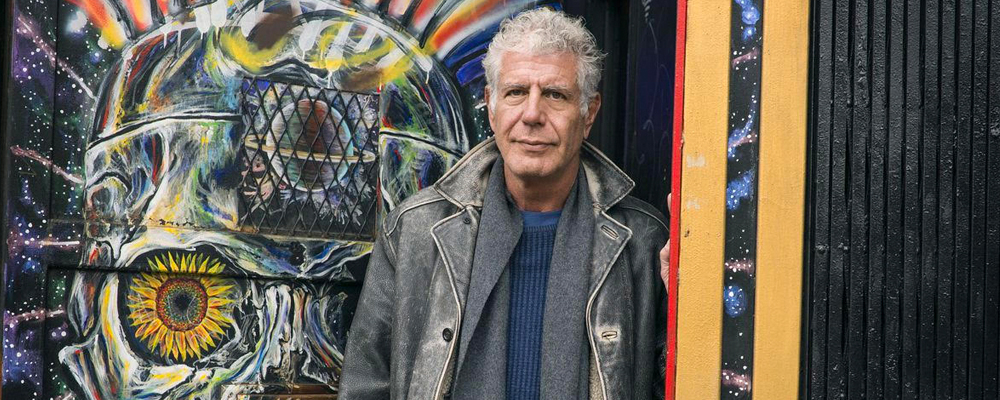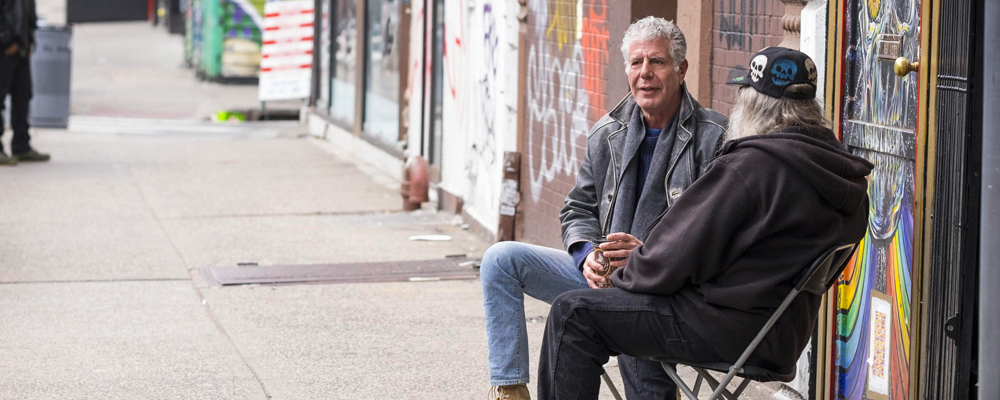‘Parts Unknown’ Series Finale Journeys Into the New York Culture That Shaped Anthony Bourdain
Alci Rengifo
In the most fitting fashion, “Parts Unknown” says goodbye by bringing Anthony Bourdain back to the streets of Manhattan’s Lower East Side. It is a series finale full of Bourdain’s Punk fervor, but because the adventurer and chef decided to take his own life earlier this year it has a particular, bittersweet spirit. After a final season composed of the last episodes Bourdain shot before his death, we return to the roots of the man. For his last few journeys we have traveled with Bourdain this season from Indonesia to the Texas border, now we walk with him through a glitzy, emerging New York City as he remembers what once was.
Edited with transitions and sections sporting a VHS look, the episode opens with Bourdain recounting via voiceover the Lower East Side of the 1970s, when the streets were gritty, crime lurked in every corner and Punk was born out of this social stew. Today, like most of New York City, the place is being slowly gentrified as glitzy shops, restaurants and unaffordable apartments are changing everything. Bordain sits down with Punk legends like Harley Flanagan, co-founder of the Cro-Mags, who got his start in music as the 12-year-old drummer for the Stimulators, Danny Fields, who discovered Iggy & The Stooges and The Ramones, and Debbie Harry and Chris Stein of Blondie. With Bourdain they discuss how living in the city shaped their lives and art, and how work now considered classic was born of out of trying to survive while doing what you love. Photographer Clayton Patterson recalls capturing the Tompkins Square Park riots, while Amos Poe and Jim Jarmusch remember their first forays into experimental, low-budget filmmaking. When he isn’t exploring the art and history, Bourdain gets slightly more personal, opening up about coming to Lower East Side in search of drugs, while taking in the local music scene. Even as everything begins to change, the memories remain.
Anthony Bourdain always symbolized something unique during his time as a television personality. It was something that was already present in his books about cooking and travel. Read his first book, “Kitchen Confidential,” and you sense in the prose a natural rebel, blessed with intelligence for sure, but identifying more easily with Sid Vicious than with the stereotype of a high end chef. This final episode of the show that surely marks the highlight of his legacy is fittingly the one most imbued with Bourdain’s very essence. He shares an egg cream with Harley Flanagan as they talk about living in rundown buildings, the Punk scene and avoiding the roving gangs in the streets. In one of the most naked moments, Bourdain and Clayton Patterson look over the old logos on heroin packets, with Bourdain nonchalant about which ones he remembers trying. The food is barely even discussed, with only underground icon Lydia Lunch praising the cooked octopus they enjoy while chatting about her time as a true provocateur. Painter and musician John Lurie boils eggs for Bourdain, seeming quite proud to be serving something so apart from the exotic cuisines the host is used to trying on the show. One senses the way Bourdain admires these personalities who in a sense have fueled his own image. When he sits down with Debbie Harry and Chris Stein the sense of awe from Bourdain is obvious, even in the way he speaks with a somewhat lowered voice, like a fan before his idols.
More than an episode about food, what this segment really deals with is the passage of time and the disappearance of our old worlds. The era of CBGB, cheap rooms and bohemian culture has dissipated, making way for the corporate takeover via gentrification. Shots of the 1970s and 1980s are contrasted with new footage of hipsters texting, running on treadmills in fancy new gyms and getting coffee at pricey new joints. Some like Jim Jarmusch don’t seem too surprised, insisting change is inevitable. Jarmusch even mentions how where there used to be a Native American trading post there now stands the empire of Wall Street. But it can’t be denied that there is a melancholy sense that with New York becoming a city almost exclusively for the rich, the kind of movements that have given us so much find it harder to thrive.
Another key theme in this final bow is another nod to Bourdain himself, and that is the importance of doing what you love. Nearly every artist featured, from Richard Hell, founder of the Voidoids and Television, to performance artist Karen Black, make the point that they did what they did because they had no choice. These were artists determined to chart their own paths, even if it meant living penniless for long stretches of time. Like Bourdain himself, these are adventurous souls who almost became legends by accident. They just didn’t want to follow the rules.
A final moment with Lurie has a special power as he tells Bourdain he is quite happy he didn’t miss the golden age of wildness in the Lower East Side. It is a moving comment because as “Parts Unknown” says goodbye, we realize how lucky we were as viewers to have Anthony Bourdain. He brought the world home to countless screens through its food and cultures, each time giving us a little of himself in the process. This final episode gives us a bit more of Bourdain, bringing him back home to give us a farewell both insightful and full of the art that defined his free spirit.
“Anthony Bourdain: Parts Unknown” series finale aired Nov. 11 at 9 p.m. ET on CNN.

